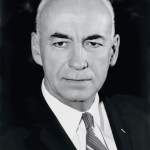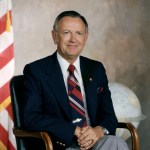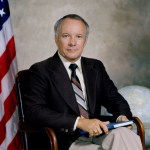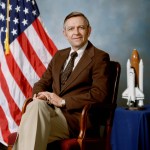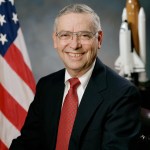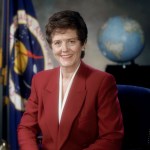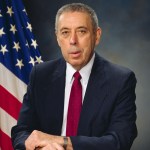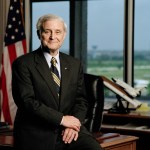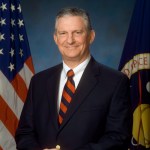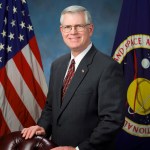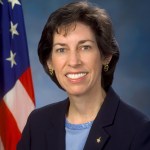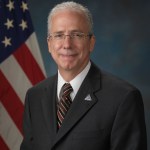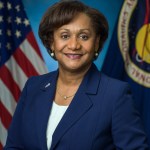
Gerald D. Griffin
Johnson Space Center Director, 1982 - 1986
Gerald D. Griffin became Johnson Space Center’s third director on August 8, 1982. After spending four years in the U.S. Air Force, he became involved in the space industry in 1960 when he joined the Lockheed Missile and Space Company. He worked at the Satellite Test Center in Sunnyvale, California, and later at General Dynamics in Fort Worth, Texas.
Griffin joined NASA in 1964 when he became a flight controller at the Manned Spacecraft Center. In 1968, he was named a flight director and assigned to the first crewed mission of the Apollo Program, Apollo 7. As the lunar program progressed, he became lead flight director for Apollo 12, 15, and 17.

Read Gerald D. Griffin’s oral history transcript
As the Apollo Program wound down, Griffin accepted several positions that took him across the United States. In 1973 he moved to Washington, DC, to serve as the assistant administrator for legislative affairs at NASA Headquarters. That position requires maintaining constructive communication between the space agency and Congress, and during this time Griffin worked to ensure a solid relationship between the two as NASA designed and tested the space shuttle. Only a few years later he became the deputy associate administrator for Manned Space Flight (Operations). Shortly thereafter, in 1976, he moved to California to become the Dryden Flight Research Center deputy director where he played a leading role in planning and executing the space shuttle Approach and Landing Test flights. A year later, he moved to Florida to serve as Kennedy Space Center’s deputy director.
Griffin’s wide range of experience at NASA led to his appointment as Johnson’s center director in 1982. Looking back, he thought he was “fortunate to have those experiences” before he returned, because he felt like he had “a good feel for the agency and what they do at different centers.” Having worked at Headquarters, Dryden, and Kennedy, he learned how other centers viewed Johnson and wanted them to understand “that JSC wasn’t trying to dominate all of NASA.”
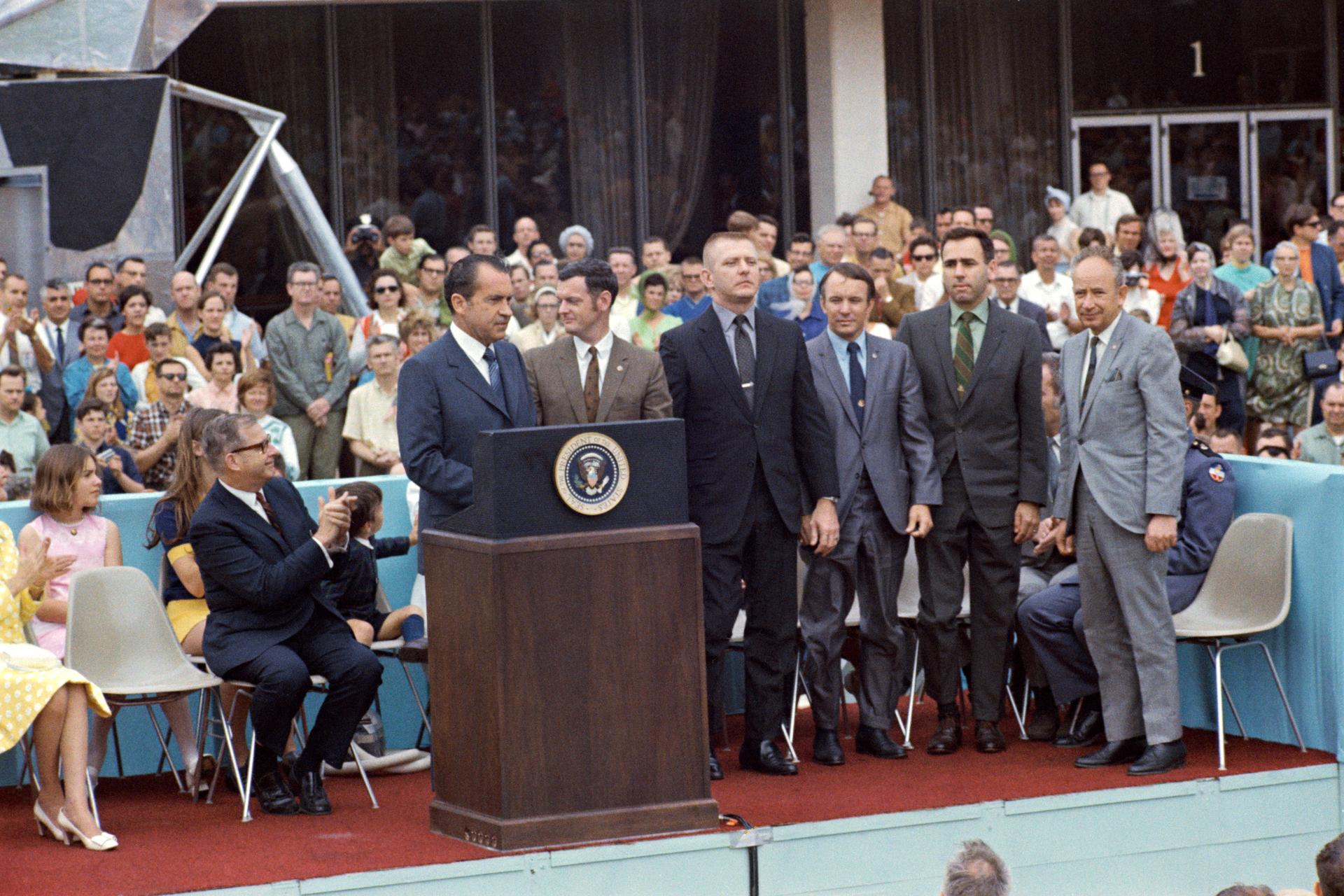
As the Space Station Program came online, he advocated for Johnson to manage the effort. Griffin explained, “We know how to do this. We’ve done it in Apollo.” When Johnson was named “Lead Center” for the development of the space station in 1984, some felt that Houston’s position was overblown. Leadership at Marshall Space Flight Center and the other NASA facilities often felt as if Johnson did not always value their work or contributions. To combat this idea, Griffin spent time flying around the agency, acting like former Secretary of State Henry Kissinger, using what he called “shuttle diplomacy” to fairly split the work amongst the field centers.
When Griffin stepped down as director in January 1986, the agency had made great strides. During his tenure, 19 space shuttle missions had flown, and the arena of space had changed dramatically since the Gemini and Apollo astronauts had flown in space. Under his leadership, Sally K. Ride became the first American woman to fly in space in 1983, followed by the first African American astronaut Guion S. Bluford that same year.


























